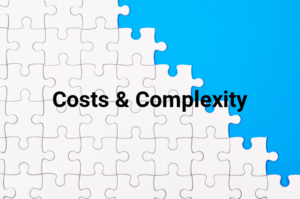By Michael Meeks, SVP of Software Development at BHMI
Growing demand from consumers and businesses and the rollout of FedNow are expected to drive rapid adoption of real-time payments in the coming years.
Real-time payments offer many benefits across the entire economy, including instant settlement, greater transparency, and improved liquidity management. The US Faster Payments Council identified over 100 use cases, ranging from retail, restaurant, and IoT payments to federal emergency disbursements, payroll, and real estate closing.
While the technology is here to support instant payments, businesses and payment processors face several challenges in the path to adoption.
Real-Time Payments and the Obstacles Ahead
A recent report by Jupiter Research found the number of instant transactions will grow globally by 289% over the next four years.
Despite the opportunities, there are several challenges on the path to adopting real-time payments. The 2023 Faster Payments Barometer surveyed more than 400 organizations from various industries on the progress and perceptions around faster payments. It found that 62% of respondents are implementing or have implemented RTP from The Clearing House RTP, while 44% are implementing the FedNow Service by the Federal Reserve. However, respondents were also clear about their challenges, including interoperability, high upfront costs and complexity, a lack of standards, insufficient readiness to monitor risk, and a lack of directory services.
Navigating 4 key challenges

As organizations strive to adopt real-time payments, many find their legacy systems are not fast and agile enough to handle the speed. They face four main challenges in supporting real-time payments:
- Legacy systems and lack of interoperability
More than half of respondents (57%) in the Faster Payments Barometer cited a lack of ubiquity/interoperability as a barrier to adopting faster payments. Most still have legacy infrastructures that cannot support real-time payments, and upgrades can be costly with significant downtime, often leading companies to push back or cancel initiatives.
While more than 90% of organizations believe it’s essential to achieve interoperability, many challenges remain in the back office. To overcome this hurdle, they need a modern back-office ecosystem that can continuously load data from all payment data sources for processing. Using the latest message format, it should also support all payment methods, including card-based and account-to-account real-time payments.
2. High upfront costs and complexity to upgrade

Nearly half (47%) of respondents in the Faster Payments Barometer said high upfront costs and complexity are barriers to adoption. It is typically expensive to update legacy systems to support real-time payments. These systems are also heavily dependent on manual and paper-based processes unsuitable for the complex requirements of processing instant payments.
Some companies address this challenge by implementing highly configurable systems designed to support new payment methods and automate business processes seamlessly. These systems are easier to adapt because they can be modified via rules configuration rather than expensive and time-consuming software changes.

3. Complexity and Uncertainty in Disputes
While disputes are an ever-present cost of doing business in the payments space, the occurrence and costs of these disputes are rising. Chargebacks are growing at an annualized rate of 1.5% and are expected to top $100 billion in 2023, according to a report by Merchant Fraud Journal.
Financial institutions and payment processes have well-established processes for handling disputes with cards and ACH. However, there are no such standardized processes in place for real-time payments. They now need new rules, systems, and processes to manage disputes for real-time payments. An updated back office enables them to manage chargebacks better, gain more insight and control, identify trends, and reduce volume.
4. Inability to Monitor Risk in Real Time
Fraud is a growing threat across the entire payments landscape, and Juniper Research expects fraud losses to top $343 billion globally between 2023 and 2027. the language of the above wereyes

Processors are used to dealing with checks, cards, and ACH fraud, but it happens much faster in real-time payments. While processors take hours, or even days, to discover fraud with traditional payments, real-time payments leave mere seconds before the transaction is settled.
Congress and regulators are looking closer at how to better protect consumers from real-time payments fraud. With the release of FedNow, the Federal Reserve released several fraud mitigation tools, such as transaction limits and negative lists. However, it also said that as financial institutions are the first line of defense, they will want to evaluate their fraud management approach with additional steps to protect themselves and their customers.
Upgrading the back office reduces the risk of fraud by closing the time window between the time of the transaction and the settlement. For example, implementing software based on a continuous process architecture means that back-office processing, such as settlement and reconciliation, begins instantly once a transaction is authorized.
Real-time benefits ahead
While real-time payments will offer many benefits and opportunities across the economy, financial services organizations and payment processors must address several challenges along the way. Updating their back-office systems can help mitigate risk while reducing complexity and long-term costs.
About the Author

Michael Meeks is SVP of Software Development for BHMI and is responsible for strategic technical development directions, software development standards, and software management procedures and tools for BHMI’s cross-platform development environment. Michael has been a partner with BHMI since 1987. Before joining the company, he was a senior systems engineer at a large financial software firm. Mike has a BS in Computer Science from the University of Nebraska at Omaha. Michael’s background includes database design, object-oriented design, system performance and sizing, telecommunications protocol development, and the design and development of large distributed systems. He has over 30 years of experience designing and developing mission-critical applications.

